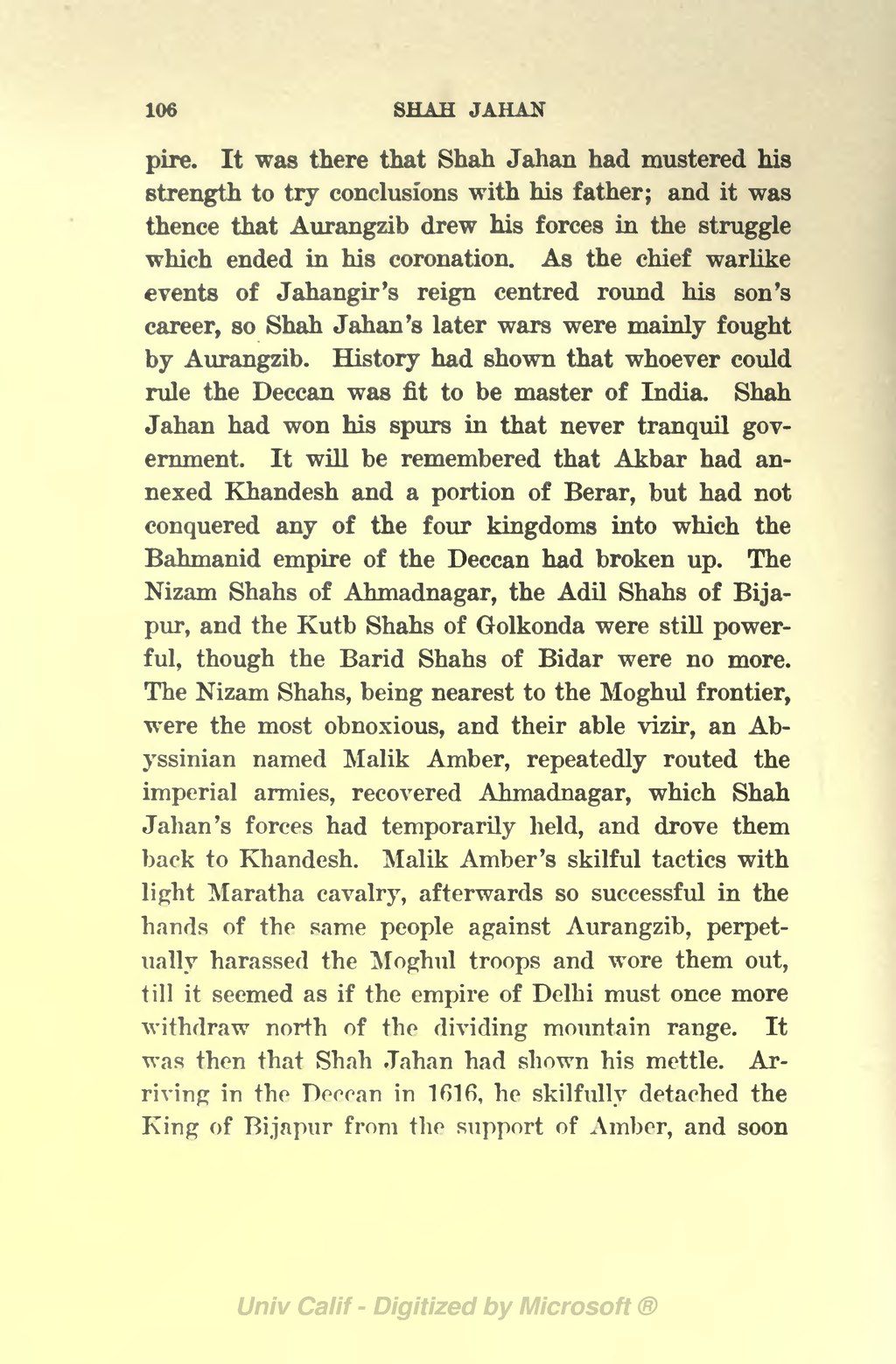pire. It was there that Shah Jahan had mustered his strength to try conclusions with his father; and it was thence that Aurangzib drew his forces in the struggle which ended in his coronation. As the chief warlike events of Jahangir's reign centred round his son's career, so Shah Jahan's later wars were mainly fought by Aurangzib. History had shown that whoever could rule the Deccan was fit to be master of India. Shah Jahan had won his spurs in that never tranquil government. It will be remembered that Akbar had annexed Khandesh and a portion of Berar, but had not conquered any of the four kingdoms into which the Bahmanid empire of the Deccan had broken up. The Nizam Shahs of Ahmadnagar, the Adil Shahs of Bijapur, and the Kutb Shahs of Golkonda were still powerful, though the Barid Shahs of Bidar were no more. The Nizam Shahs, being nearest to the Moghul frontier, were the most obnoxious, and their able vizir, an Abyssinian named Malik Amber, repeatedly routed the imperial armies, recovered Ahmadnagar, which Shah Jahan's forces had temporarily held, and drove them back to Khandesh. Malik Amber's skilful tactics with light Maratha cavalry, afterwards so successful in the hands of the same people against Aurangzib, perpetually harassed the Moghul troops and wore them out, till it seemed as if the empire of Delhi must once more withdraw north of the dividing mountain range. It was then that Shah Jahan had shown his mettle. Arriving in the Deccan in 1616, he skilfully detached the King of Bijapur from the support of Amber, and soon
